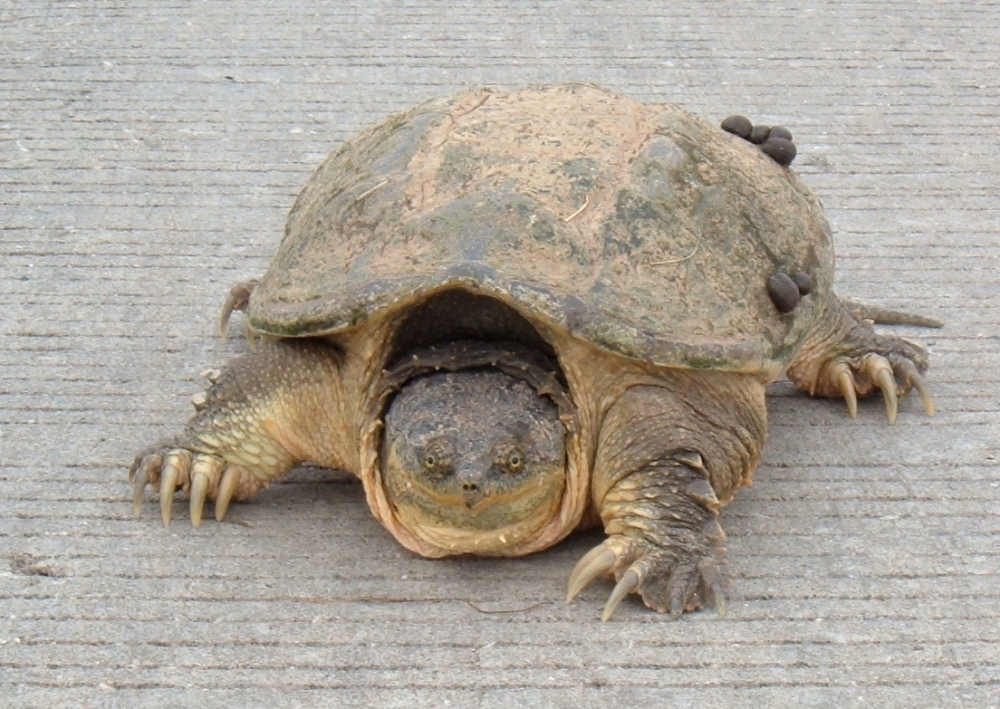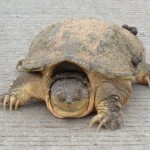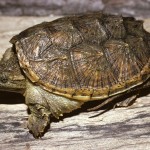Common Snapping Turtle Facts
Scientific Classification Of Common Snapping Turtle: Chelydra serpentina
Kingdom of Common Snapping Turtle: Animlia
Phylum of Common Snapping Turtle: Chordata
Class of Common Snapping Turtle: Reptilia
Order of Common Snapping Turtle: Testudines
Family of Common Snapping Turtle: Chelyridae
Genus of Common Snapping Turtle: Chelydra
Species of Common Snapping Turtle: C.serpentina
Pictures of Common Snapping Turtle
Enjoy some cool pictures if these species.
Interesting Facts about Common Snapping Turtle
- One of the interesting things about these species is that these turtles possess extraordinary quality of detecting dead bodies in rivers and lakes.
- In the year 2006, these species were recognized as one state reptile of New York City.
- These species were also starred in one of the famous cartoon shows Of America in the year 1808.
- These snapping turtles are pretty large in size.
- They are timid by nature and seldom hurt human beings.
Distribution of Common Snapping Turtle
One can easily spot these species along the Rocky Mountains of eastern USA. They also dwell in parts of Southern Canada and Gulf of Mexico.
Description of Common Snapping Turtle
- Size of Common Snapping Turtle: Adult turtles usually vary in length from 25 to 47 cm.
- Weight of Common Snapping Turtle: Weight of the normal adult species ranges from 10 – 35 pounds.
- Shell of Common Snapping Turtle: The shell of these species is dotted with dark and black ridges. However, the ridges seem more prominent in the younger ones. They are of brown or green in color. Sometimes, the shell is patched with some moss as well.
- Plastron of Common Snapping Turtle: Usually the plastron is small and is not covered.
- Tail of Common Snapping Turtle: These species have long tails and combines it by bony plates.
- Head of Common Snapping Turtle: The head of these species are large connected by an elastic neck. They also have powerful jaws and a strong beak.
Behavior of Common Snapping Turtle
- The mental state of these species always reflects furiousness.
- On sensing something uncanny, they emit a hissing sound.
- These species are mostly active during the nighttime.
- However, they cannot pretend to hide under the shells due to their giant body size. This is why they have adapted to the mechanism of snapping.
- These species catch hold of their prey with the help of their beaks.
Food Habits of Common Snapping Turtle
- These species are omnivorous and like to feed on animals more than plants.
- Only 1/3 of their diet consists of plants.
- Their common diet comprises of worms, frogs, insects, snakes, birds and small mammals.
- In addition to this, these species also feed on dead bodies.
Habitats of Common Snapping Turtle
- These species like to dwell in the watery areas.
- During the time of breeding these species inhabit on the land.
- One can easily spot these species around the lakes, ponds and shallow water areas.
- They can sometimes also be found in the estuaries.
Reproduction of Common Snapping Turtle
- Peculiar to these species, the size determines the sexual maturity and not their age.
- They are ready to breed when their shell is about 8 inches.
- These species usually breed in months stretching from April – November.
- The female counterparts have an outstanding capacity to store the sperms for long.
- These species usually travel greater distances in quest of sandy areas for laying their eggs.
- Each clutter of eggs consists of 25 to 80 eggs on an average.
- Once the offspring comes out of the egg, they proceed towards the water.
- The eggs become a common prey to raccoons, foxes and snakes.
Adaptations of Common Snapping Turtle
- These species have a long and elastic neck.
- These turtles have the ability to expand their necks in order to grasp its prey with the help of the beak.
- The excellent location of the nose enables them to breathe in deep water.
- Their bodies can withstand temperatures of about 49 to 100 degree Fahrenheit.
Predators of Common Snapping Turtle
- Raccoons
- Dogs
- Cows
- Skunks
- Crows
Petting Of Common Snapping Turtle
One has to be very careful and have a very rational approach while keeping these species as pets.
- When they are small, they can appear cute but as they grow older, they tend to become adamant.
- Holding the turtle from its sides should be strictly avoided as it might result in bites with their long necks.
- One should be very cautious not to hold these species with their tail as it hurts their vertebral column.
- Picking up these species, might cause serious injuries with their sharp claws. Hence a proper way of holding them should be learnt.
Caring Of Common Snapping Turtle
One should keep in mind the following pointers in mind before petting these species:
- Proper Habitat: The container should be large & profound. This helps the turtle to inhale and exhale conveniently.
- Proper light: These species actually require light for heating.
- Proper Food: In order to feed the turtles properly, a good diet should consist of chicken, meat, fish and insects.
Life Span of Common Snapping Turtle
The common snapping turtle can actually live up to 30 years.
Conservation Status of Common Snapping Turtle
The lives of these species are not threatened.




